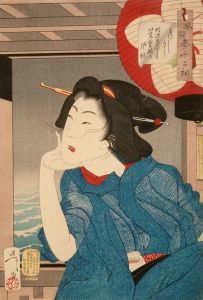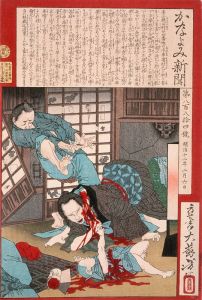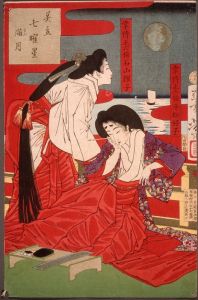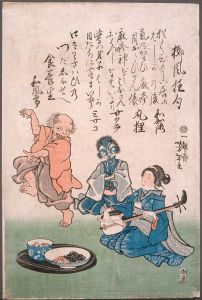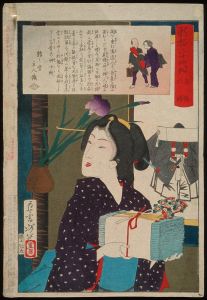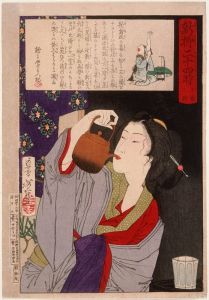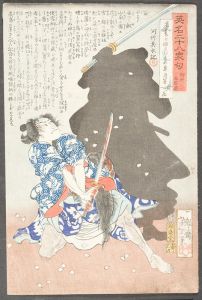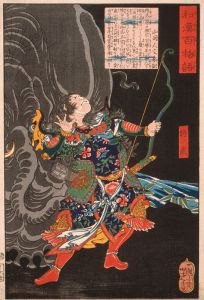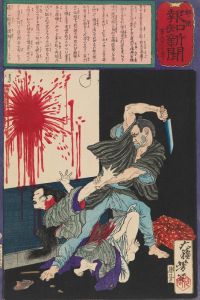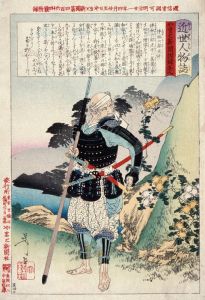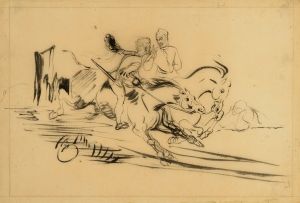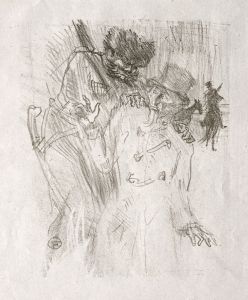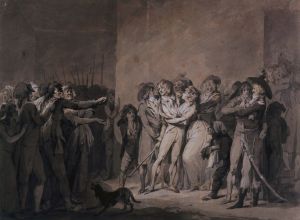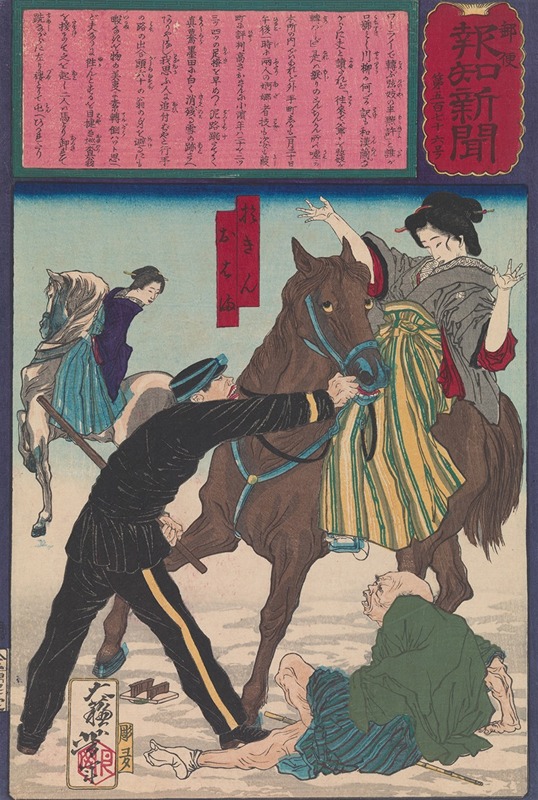
Police Arresting the Geisha Oharu and Okin for Injuring an Old Man While Galloping on Horseback
A hand-painted replica of Tsukioka Yoshitoshi’s masterpiece Police Arresting the Geisha Oharu and Okin for Injuring an Old Man While Galloping on Horseback, meticulously crafted by professional artists to capture the true essence of the original. Each piece is created with museum-quality canvas and rare mineral pigments, carefully painted by experienced artists with delicate brushstrokes and rich, layered colors to perfectly recreate the texture of the original artwork. Unlike machine-printed reproductions, this hand-painted version brings the painting to life, infused with the artist’s emotions and skill in every stroke. Whether for personal collection or home decoration, it instantly elevates the artistic atmosphere of any space.
Tsukioka Yoshitoshi (1839–1892) was a renowned Japanese artist known for his work in ukiyo-e, a genre of woodblock prints and paintings that flourished in Japan from the 17th through 19th centuries. Yoshitoshi is often celebrated for his innovative approach to traditional subjects and his ability to capture the complexities of human emotion and historical narratives. One of his notable works is "Police Arresting the Geisha Oharu and Okin for Injuring an Old Man While Galloping on Horseback."
This artwork is part of Yoshitoshi's series "Tsuki hyakushi" (One Hundred Aspects of the Moon), which was produced between 1885 and 1892. The series consists of 100 woodblock prints, each depicting a scene inspired by Japanese and Chinese history, folklore, and literature, all unified by the theme of the moon. Yoshitoshi's work in this series is characterized by its dramatic compositions, vivid colors, and intricate details, which reflect both the influences of Western art and the traditional Japanese aesthetic.
"Police Arresting the Geisha Oharu and Okin for Injuring an Old Man While Galloping on Horseback" illustrates a specific incident involving two geisha, Oharu and Okin. In the scene, the two women are depicted in a moment of tension and drama as they are apprehended by police officers. The narrative suggests a transgression of social norms, as the geisha are shown engaging in an activity—galloping on horseback—that was likely considered inappropriate or scandalous for women of their status during that period. The incident escalates when an old man is injured, prompting the intervention of law enforcement.
Yoshitoshi's depiction of this event is notable for its dynamic composition and the way it captures the movement and emotion of the scene. The artist employs a keen sense of storytelling, using visual elements to convey the urgency and chaos of the moment. The expressions of the characters, the positioning of the figures, and the use of space all contribute to the narrative, drawing the viewer into the unfolding drama.
The print is also significant for its reflection of societal attitudes and the role of geisha in Japanese culture during the late Edo and early Meiji periods. Geisha were often seen as entertainers and cultural icons, yet they also navigated complex social dynamics and restrictions. Yoshitoshi's work provides insight into these cultural nuances, offering a glimpse into the lives and challenges faced by women in this profession.
Overall, "Police Arresting the Geisha Oharu and Okin for Injuring an Old Man While Galloping on Horseback" exemplifies Yoshitoshi's mastery of the ukiyo-e form and his ability to blend traditional themes with contemporary issues. Through his art, Yoshitoshi not only preserved historical and cultural narratives but also pushed the boundaries of the medium, leaving a lasting impact on the world of Japanese art.






